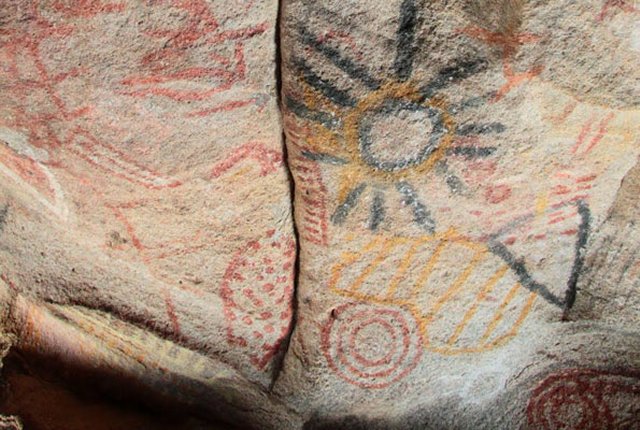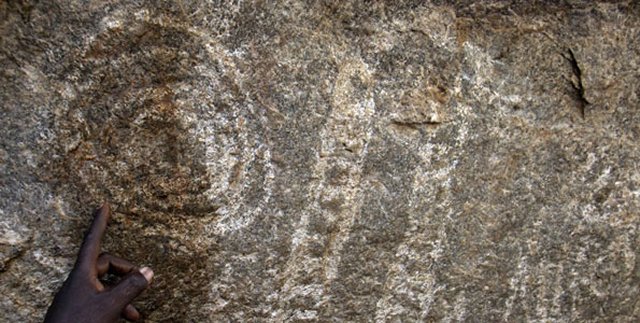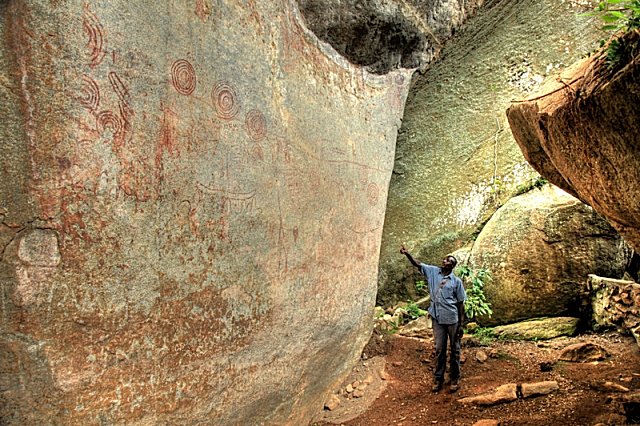MessageToEagle.com – A five-year study has concluded that the paintings at Uganda’s rock art sites were done by settled human groups and not early hunter-gatherers as it has long been believed.
There is a connection between Bushmen societies of southern and Central Africa and the makers of the paintings, according to the study.
It is difficult, however, to interpret the different signs because these people have disappeared and cannot be traced.

Still the ingenuity, in which they were painted demonstrates a high degree of appreciation of their aesthetic values.
The findings are contained in a new book titled ‘Uganda Rock Art Sites: A Vanishing Heritage of Lake Victoria Region’ published by the National Museum of Uganda and edited by Prof Barbara Turchetta and Jackline Nyiracyiza.

“According to our C-14 investigations on pigments at Nyero and Kakoro sites, different paintings of the Uganda side of Lake Victoria region date between 5,000 and 1,600 years BP, being on a line with Wiltonian and Magosian like industries in the late Stone Age period described by archeologists that offered us evidence of settled human groups rather than hunter-gatherers nomadic groups,” Prof Turchetta said.
Excavations at archaeological site at Magosi (north of Moroto) show clear evidence of of a Magosian culture older than the one found in the Horn of Africa and Kenya.
People inhabiting the site was influenced by the late Middle Stone Age folk, though already belonging to the early late Stone Age.
Wayland and Burkitt findings (1932) also suggested a dating of Magos in the long dry interpluvial period, rather than in the first post-pluvial wet phase where Magosian cultures in East Africa are normally inserted.
See also:
Gigantic Engravings Of A Giraffe Created Long Before Egypt As We Know It Existed
Mystery Of 3,000-Year-Old African Civilization Garamantes And Its Ancient Secrets
African Stonehenge – Extraordinary Stone Circles Of Senegambia – Who Were Their Unknown Builders?
During the late Stone Age, the Rift Valley region had probably settlements of seminomadic groups devoted to animal herding as it has been attested by goat and cattle fossilised bone findings.
The Nyero site was discovered by C.A.E Harwich in 1945. Nyero was the first rock art site to be catalogued and described in full within Uganda. Nyero itself is composed of granite, and just under 40m high. There are two areas of the site which are considered to be shelters.
The first – Nyero 1 – is a small rock area with only a small overhang of 2 meters, while Nyero 2 is much larger with a 16 meters overhang and is where the most rock paintings have been found.
“Outcrops where paintings are located showed themselves from quite far on the flat land and may have been used in the past as a reference point, to show direction of paths and orient cattle shepherds or fishermen for their movements on earth and water, at a time when dambos were rich in water flowing, some three to four millennia ago.”
“They are still reference points for shepherds moving with cattle to reach flat areas rich in water. In looking at the dambos, the richest panels are close to a dambo end or ridge, where the outcrop naturally signs the end of soil erosion, which caused the water flowing easily in the valley floors and where it still prevents water over flooding.”
“Except for Nyero site 2, all panels are located on the outer surface of an outcrop, some of them are visible from far, as it is the case of Kakoro main site, showing a menhir like rock, 10 metres high with the paintings almost faded due to excessive exposition to the sun light and other atmosphere agents,” Prof Turchetta adds.
MessageToEagle.com







